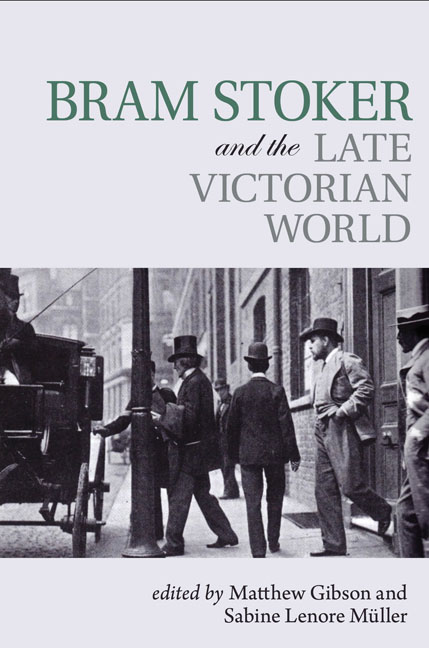7 - Bram Stoker, Geopolitics, and War
Summary
On February 3, 1892, Rudyard Kipling and his new bride Caroline Balestier boarded a train in London for Liverpool to begin a honeymoon excursion to the United States. Gathered on the platform to see them off were such literary notables as Henry James, who had given the bride away, Edmund Gosse, the publisher William Heinemann, and Bram Stoker. Although none of Stoker's biographers record his attendance at the train station that day, at least two Kipling biographers do. Despite their failure to mention such a close relationship between Stoker and Kipling, Stoker's biographers have provided ample evidence that Stoker and Kipling could well have met and interacted since at least 1889. In that year, Stoker introduced his friend Hall Caine to Wolcott Balestier, Kipling's future brother-in-law and the London representative of a New York publishing house seeking to set up a new publishing firm with William Heinemann. In 1891, this imprint, The English Library, opened with the publication of Kipling's The Light that Failed. Two years later, Stoker himself would appear in print alongside Kipling in Pall Mall Magazine.Through the Pre-Raphaelite painter Edward Burne-Jones, Stoker might likewise have encountered Kipling, Burne-Jones’ nephew. Edward was among the many celebrities of the day who frequented the Lyceum and shared meals with Henry Irving and Stoker in the Beefsteak Room. In 1888 Edward's son Phillip, whom Ellen Terry described as “one of the Lyceum's greatest admirers,” helped design sets for productions of King Arthur and Coriolanus at the Lyceum. In the same year in which Dracula was published, 1897, Phillip exhibited a painting titled The Vampire; to commemorate the occasion, Kipling, Phillip's cousin, published the text “The Vampire.”
Although the extent of their personal and professional connections are, admittedly, somewhat nebulous, Stoker and Kipling did share one abiding passion that would have drawn them to each other: a pronounced enthusiasm for the British empire and a keen awareness of the geopolitical threats to British hegemony. The child of English missionaries in India and a one-time student at the United Services College at Westward Ho!, a boarding school in Devon “intended to attract the sons of naval and military officers who could not afford the fees of the great public schools,” Kipling early on manifested a precocious understanding of the perils facing the interests of the empire.
- Type
- Chapter
- Information
- Bram Stoker and the Late Victorian World , pp. 149 - 176Publisher: Liverpool University PressPrint publication year: 2019

